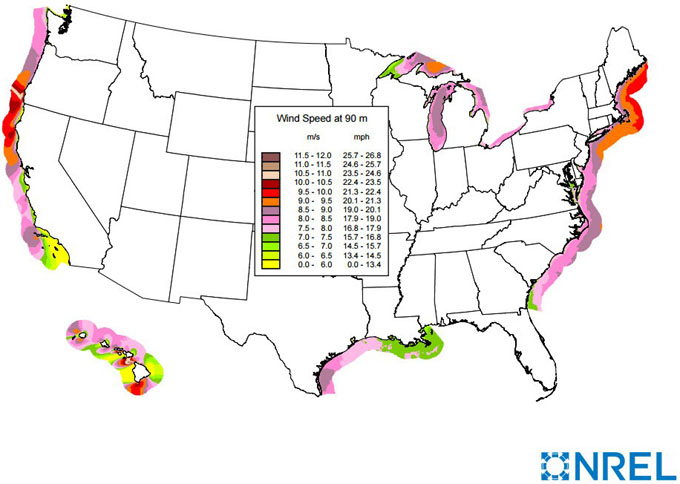This year, due to COVID-19 restrictions, the US Offshore Wind Conference took place virtually on June 18-19, 2020. The event gathered over 150 speakers and 7,000 attendees, and covered topics from financing, permitting, supply chain development, transmission planning, construction and installation, floating wind activity, regulatory updates, project case studies, and more.
Several Acteon staff and executives participated, and these are their five key takeaways from the conference:
COMMITMENT FOR US OFFSHORE WIND CONTINUES TO GROW
There are currently 15 active commercial leases for offshore wind development in the U.S. and eight projects that have reached the permitting stage. That puts the current commitment at around 22GW by 2030. The nation’s first offshore wind project, the Block Island Wind Farm (BIWF), came online in 2016. The BIWF was developed by Deepwater Wind and is a 30 MW project with five 6-MW turbines off the coast of Block Island, Rhode Island.
The U.S. looks at the East and West Coasts and the Great Lakes for its potential, which according to the AWEA is a little short of 2,000 gigawatts (GW), nearly double the nation’s current electricity use.
HUGE INVESTMENT NEEDED FOR US OFFSHORE WIND COMMITMENTS
Tom Harries, Head of Wind Research, at BloombergNEF said that the offshore wind industry is likely to invest around $50bn in the U.S. economy by 2030.
The Bureau of Ocean Management (BOEM) is working closely with several states regarding offshore energy development and is in the process of coordinating federal-state task forces in certain coastal states. The current leasing status can be found on the BOEM website.
The top ten projects currently in the running in the U.S. are:
- Icebreaker Wind (20.7MW), Lake Erie
- Skipjack (120MW), Delaware
- South Fork (130MW), Rhode Island and Massachusetts
- Marwind (248MW), Maryland
- Revolution Wind (700MW), Connecticut and Rhode Island
- Vineyard Wind (800MW), Massachusetts
- Empire Wind (816MW), New York
- Sunrise Wind (880MW), New York
- Ocean Wind (1.1GW), New Jersey
- Dominion (2.64GW), Virginia
US offshore wind speed estimates at 90-m height

Source: NREL
PERMITTING IS PROGRESSING
Eight projects have reached the permitting stage. Much like others before them, projects face the typical regulatory delays. However, some good news came when the supplemental draft environmental report for the Vineyard Wind project was released a few weeks ago. The report was to analyse the cumulative impacts on fishing and coastal habitats of the proposed 84-turbine Vineyard Wind 1 project. Looking at several wind facility layouts, the report concluded that the project will have a moderate effect on commercial fishing and coastal habitats. After the 45-day comment period, BOEM is expected to decide by December 18. If approved, construction of the $2.8 billion project could begin in 2021.
RESEARCH AND DEVELOPMENT AND US-SPECIFIC SUPPLY CHAIN PLANNING ARE DEVELOPING
Research and development projects are set to move fast in the U.S. offshore wind sphere, as the U.S. National Offshore Wind Research and Development Consortium recently awarded $10 million to twelve projects selected for offshore wind research and development. The funding will support research in areas such as the U.S. offshore wind supply chain, offshore wind impact on the electric grid system, and innovations in anchoring structures.
As for the supply chain needed to deliver these projects, Thaaning Pedersen, CEO of Vineyard Wind, summarized the situation by saying that a new type of cooperation and partnering between European and American companies will be key to lower costs and innovative solutions adapted to the U.S. environment, regulations, and ways of working. He said, “the US offshore wind sector needs European-American joint ventures to succeed”.
FLOATING OFFSHORE WIND WILL PLAY AN IMPORTANT ROLE IN THE U.S. MARKET
After the initial fixed wind developments in the shallower East Coast areas, floating wind is set to soar. It is generally accepted that in water depth greater than 60m (about 200ft) floating wind systems are more cost-effective than fixed systems. The future of the US offshore wind industry will largely depend on these.
KeyFacts Energy Industry Directory: Acteon
 KEYFACT Energy
KEYFACT Energy